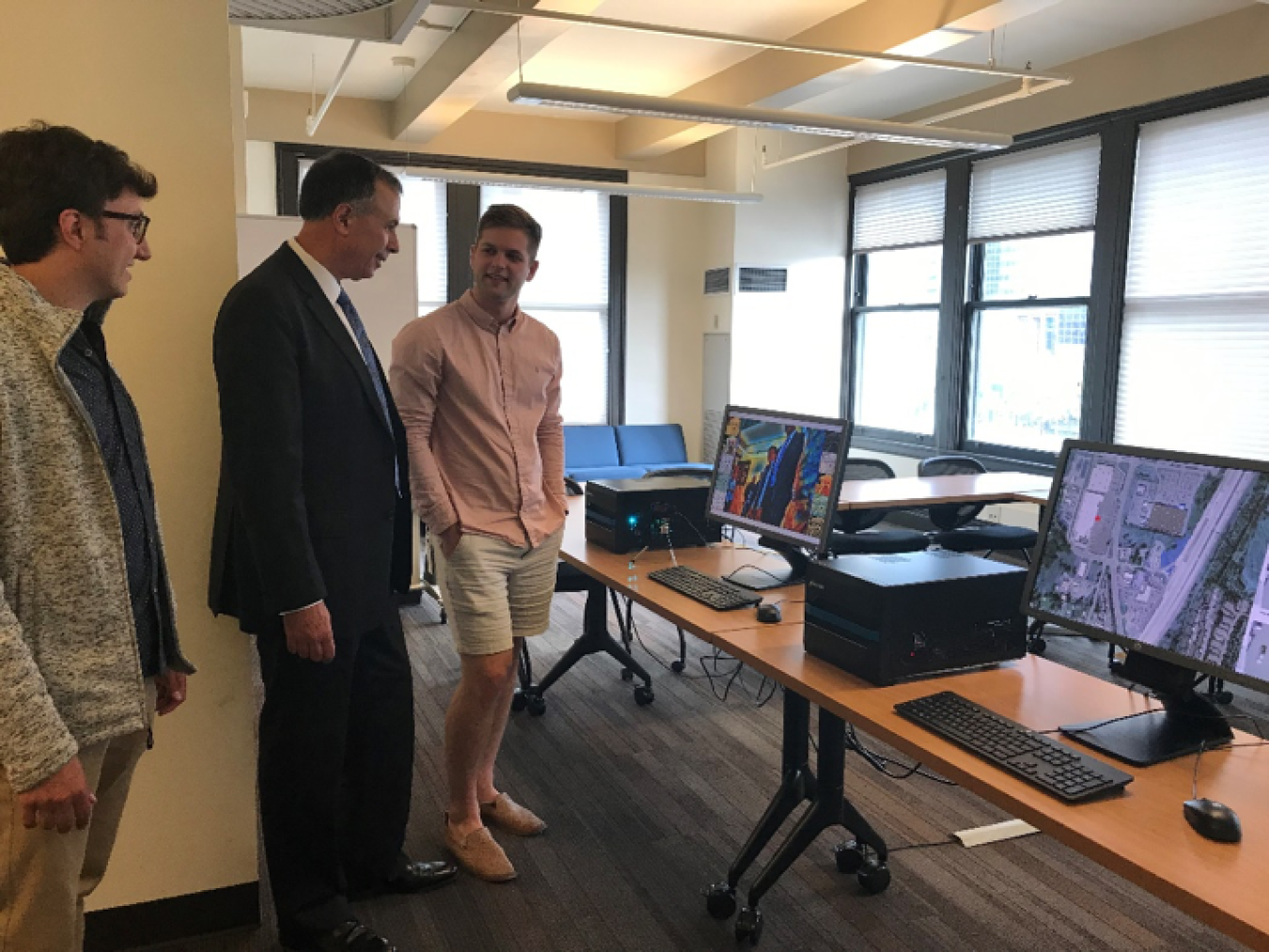To unleash the power of A.I., scientists and engineers need to find ways to redesign computers and memory so machines can learn better and faster.
August 16, 2019Artificial Intelligence (A.I.) has the potential to literally change the world. It helps scientists quickly analyze massive data sets to solve tough problems related to energy, science, national security, healthcare, and everything else in between.
The Department of Energy (DOE) – home to the world’s two fastest supercomputers, that are also A.I. enabled, and with next-generation exascale machines in development – is at the forefront of America’s A.I. revolution.
But to unleash the power of A.I., scientists and engineers need to find ways to redesign computers and memory so machines can learn better and faster. That’s why we’re working with the private sector to use A.I. to fuel and change the world we live in.
DOE has been working with Micron Technology, a U.S. leader in memory technologies, and their A.I. laboratory in Seattle, to develop next-gen memory centered accelerators, which can make A.I. more portable, energy efficient, and – most importantly – smart!
Recently, I had the opportunity to visit Micron’s lab and see some of their prototype memory technologies firsthand. These technologies will then be tested at Energy Department National Labs such as Lawrence Livermore National Laboratory, which is already home to one of the fastest supercomputers in the world and is a future home of El Capitan, one of DOE’s exascale supercomputers.
Visit energy.gov/AI to learn more.

Dimitri Kusnezov, Deputy Under Secretary for A.I. and Technology, visits Micron Technology in Seattle.
Researchers will use Livermore’s world-class capabilities to further develop and demonstrate other advanced computational technologies such as neural networks for use in a wide range of applications that impact people’s lives in a positive way.
In addition to Micron, I also visited Amazon’s new re:Invent headquarters in Seattle, home of Amazon Web Services (AWS). Researchers at AWS have made progress in designing custom materials that can boost A.I. performance. DOE and AWS are both interested in ways to advance A.I. technologies and methods like image analysis and workflow optimization, which have potential to be used in a vast range of applications.
DOE is particularly interested in applications that enhance energy efficiency, cybersecurity and grid security, as well as increasing scientific discovery and assuring our nuclear deterrent capability. Wider applications of DOE’s work in A.I. include helping water managers make smarter resource management decisions thereby improving resistance to droughts, developing smarter farming practices that increase crop yields while improving stewardship and sustainability, and speeding the discovery of new materials like metallic glasses, which are lighter and stronger than today’s best steels, and stand up better to wear and tear.
We’re also making remarkable progress in how we apply A.I. to records, images and a host of additional information to predict outcomes. This has specific use in our work with the Department of Veterans Affairs to help our veterans – but these new technologies could help us take A.I. to the next level, empowering scientists and engineers to help even more people.
With our partners and our developing technologies, we’re showing that there’s no limit to what we can do to impact people’s lives in a positive way.
Dimitri Kusnezov
Dr. Dmitri Kusnezov received A.B. degrees in Physics and in Pure Mathematics with highest honors from UC Berkeley. Following a year of research at the Institut fur Kernphysik, KFA-Julich, in Germany, he attended Princeton University earning his MS in Physics and Ph.D. in Theoretical Nuclear Physics. At Michigan State University, he conducted postdoctoral research and then became an instructor.
In 1991, he joined the faculty of Yale University as an assistant professor in physics, becoming an associate professor in 1996. He has served as a visiting professor at numerous universities around the world. Dr. Kusnezov has published over 100 articles and a book.
He joined federal service at the National Nuclear Security Administration in late 2001 and is a member of the Senior Executive Service and is also a Visiting Researcher at Yale. He currently serves as Deputy Under Secretary for A.I. and Technology.


